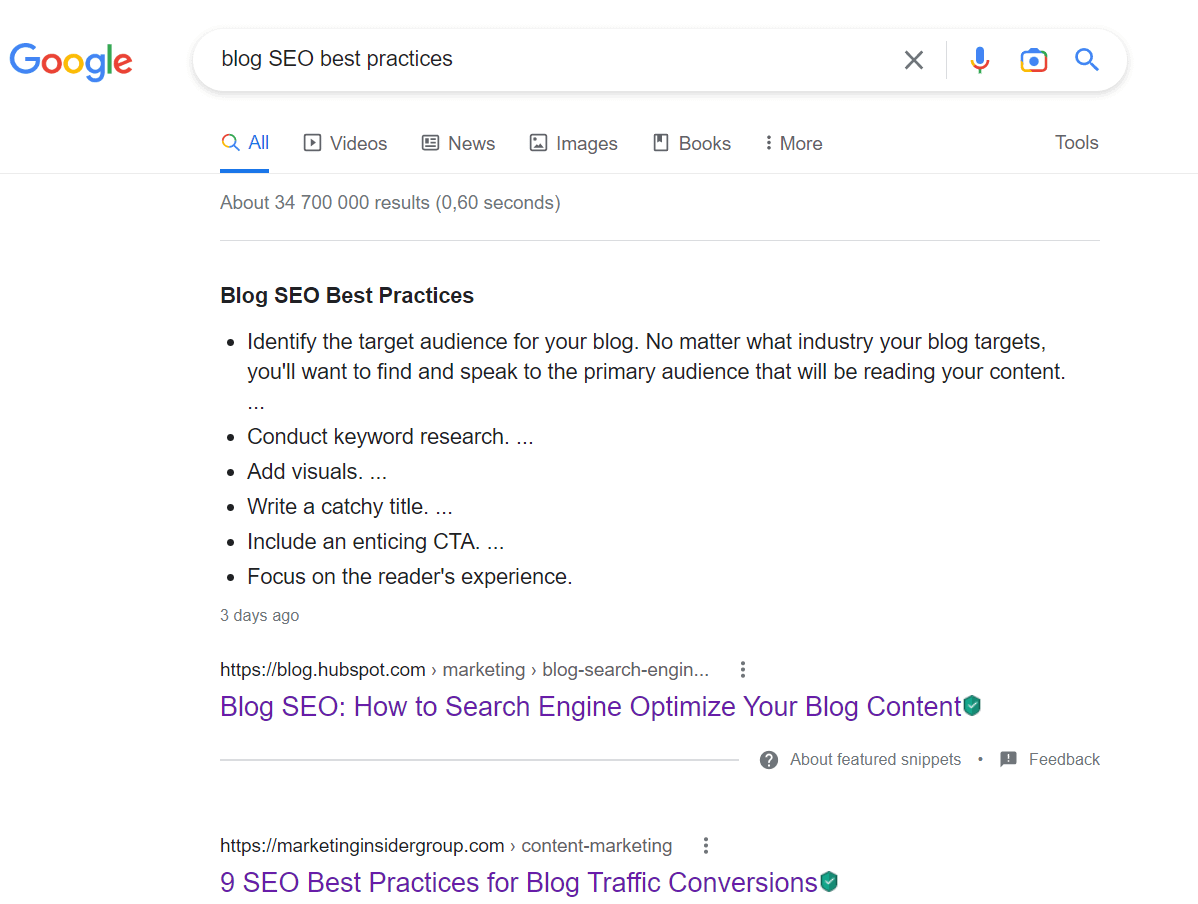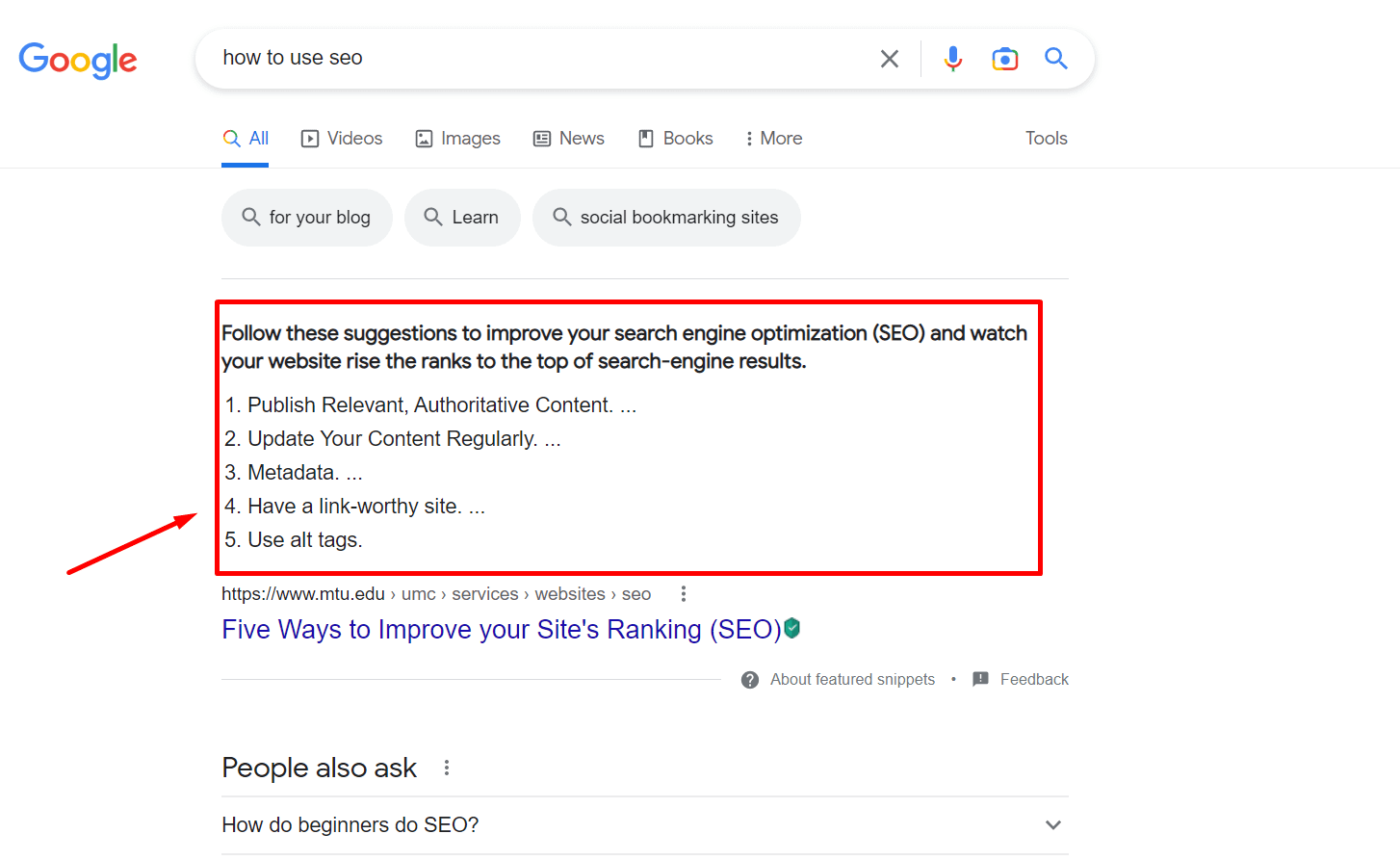Looking for effective strategies to make your content more search-engine friendly? In this post, we will share the blog SEO best practices that will help you create posts that rank higher.
While there are many things you can do to improve your SEO, these are some of the most important ones. By following these tips, you’ll be able to rank your posts higher on search engine results pages, and this can help you get more traffic to your blog.
So let’s get started!
What is blog SEO?
Blogging has many incredible benefits — it’s a great way for businesses to share their ideas, establish themselves as thought leaders, and attract the right traffic to their websites. For years, blogging has been a core part of the marketing efforts of different companies.
But with 91% of B2B businesses and 86% of B2C businesses already blogging, getting eyes on your content can take a lot of time and effort [1]. If you want your ideal market to find your blog, you must optimize it for search engines. That’s where blog Search Engine Optimization, or SEO, comes in.
In a nutshell, blog SEO is a combination of on-page strategies  you use to help your content rank higher on search engines.
you use to help your content rank higher on search engines.
Why are blog SEO best practices so important?
Blog SEO is essential for marketers and bloggers because it helps you rank higher in search engine results pages, which can lead to increased organic traffic. This is both more reliable than traffic from sources like social media and more affordable than traffic from ads.
In addition, when your blog content shows up in search results, people will see your brand name, which can help increase brand recognition. So, blog SEO can also help you build brand awareness and credibility.
Ultimately, blog SEO is an essential tool  for any marketer or blogger who wants to succeed online.
for any marketer or blogger who wants to succeed online.
Blog SEO best practices
Now that you understand what blog SEO is and how important it is for your business, let’s get into the best practices you can implement today that will help you start seeing incredible results:
1. Choose one main keyword
When it comes to SEO, quality trumps quantity. So it’s better to have one well-optimized blog post than ten poorly optimized ones. And part of optimizing your blog post for SEO is using your primary keyword throughout the post because it allows you to focus your content around a specific topic.
In addition, including your primary keyword throughout your post helps search engines understand what your post is about and increases the chances that it will be relevant to a searcher’s query. So, if you want to get the most out of your blog SEO, make sure you choose one main keyword per post.
Of course, sometimes you’ll also want to include secondary keywords in your posts. However, you shouldn’t prioritize these in the same way as your main keyword. Making sure the text flows naturally is more important than stuffing your article with as many keywords as possible.
2. Create content around search intent
Understanding search intent is one of the most important aspects of online content creation.
In a nutshell, search intent is what a person is looking for when they type a query into a search engine.
 For example, if someone is looking for “blog SEO best practices,” they probably have an informational intent.
For example, if someone is looking for “blog SEO best practices,” they probably have an informational intent.


That means they want to learn about SEO and aren’t necessarily looking to make a purchase.
On the other hand, if someone is searching for “buy computer monitor,” they probably have a transactional intent. That means they’re ready to make a purchase and just need to find the right product and/or merchant.
Creating content that aligns with search intent is one of the best ways to ensure that your content is relevant and valuable to your audience.
3. Include your keywords in key areas
If you’re looking to get your blog post noticed by search engines, you’ll need to ensure you include your keywords in the right places.
These places are:
- Your title
- Your introduction
- Your conclusion
- Your subheadings
- Your meta description
Blog SEO best practices can seem like a lot to keep in mind when you’re writing a post, but there are really only a few key places you need to focus on.
The first is the title. Include your keywords at the beginning of the title if possible, as this is what will show up in search engine results.
The next place to include keywords is in the body of the post, specifically the introduction, conclusion, and subheadings. While doing so, try to use your keyword naturally and sparingly, as excessive use of keywords can actually hurt your rankings.
Finally, remember to use keywords in your meta descriptions. This is the brief description that appears under your blog title in search results. This description is also very important because it helps potential readers know what your post is about and encourages them to click and read.
Following these simple tips will help ensure that your blog posts are optimized for search engines and reach your target audience.
4. Use a plugin
Blog SEO can be a bit of a minefield. There are so many different factors to consider, and it can be tough to know where to start.
However, an SEO plugin can help make life a little easier.
You can use a plugin like Yoast SEO.
It’s a popular plugin used by millions of WordPress users and is free to download and use.
Yoast SEO helps you to insert a focus keyword for your blog post and then guides how to optimize your content for that keyword. Yoast SEO also analyzes your post for other important factors, such as readability, length, and internal linking. Following the plugin’s recommendations, you can ensure your blog post is as search-engine-friendly as possible.
You can also use Revive.Social’s Revive Old Posts plugin to help you build traffic using social media.


The plugin helps you share your posts to multiple accounts and allows you to optimize your posts by selecting the right hashtags. It also enables you to share content multiple times, so it’s a great tool to help bring more focus to posts from your blog archive. Social media posts and profiles are often prioritized on search engines, so this can help with your SEO as well as provide additional traffic sources.
5. Add internal links
Most bloggers know the importance of adding external links to their posts. However, some don’t realize the importance of adding internal links, which is actually another key component of blog SEO best practices.
Internal linking is essential for a couple of reasons. When you include a link to another post on your blog, you’re effectively telling search engines that your blog has relevant, high-quality content. Not only that, but internal links also help to keep readers on your site longer. And the longer someone spends on your site, the better it is for your SEO.
6. Optimize for featured snippets
If you’ve ever done a search on Google before, you may have noticed that sometimes, Google provides a “featured snippet” at the top of the search results. This is a special box that contains a summary of the answer to your question, pulled from one of the websites that appears in the search results.


Featured snippets are designed to give you an answer to a question without having to click through to a webpage and read the full article.
If you’re looking to optimize your content for featured snippets, you can do a few things:
- First, make sure your content is well-organized and easy to scan. Featured snippets tend to be taken from the top of the page, so you want to ensure your most important information is above.
- Second, use clear and concise language.
- Third, format your content using short paragraphs, numbered and bullet point lists whenever possible. This makes it easier for Google to identify the most relevant information and display it in the featured snippet.
Featured snippets put you at the top of the page and give you multiple listings on the front page, so you’ll want to optimize for them whenever possible.
Over to you 
If you want to rank higher in Google and get more traffic to your blog, you need to optimize your blog posts for SEO.
You can do this by choosing one main keyword per blog post and creating content around the search intent for that particular keyword. While writing your content, be sure to include your keywords in strategic areas of your blog post, like the title, headings, meta descriptions, and throughout the body of the post. A plugin like Yoast SEO can help you do this.
You can also use a plugin like Revive.Social’s Revive Old Posts plugin, to help you build traffic from social media to your blog posts. And finally, don’t forget to include internal links in your blog posts.
By following these tips, you’ll be on your way to ranking higher in Google and getting more traffic to your blog. 
Do you have any other tips for optimizing blog posts for SEO? Share them in the comments below!
The post 6 Blog SEO Best Practices You Need to Know for 2023 appeared first on Revive Social.
Revive Social
